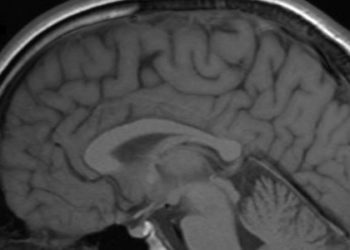CT not sufficient to rule out early subarachnoid hemorrhage [Classics Series]
This study summary is an excerpt from the book 2 Minute Medicine’s The Classics in Medicine: Summaries of the Landmark Trials
1. In a retrospective review of 119 patients presenting with sudden headache, computed tomography (CT) scan within 12 hours of symptom onset failed to identify all patients with proven subarachnoid hemorrhage(SAH).
2. Lumbar puncture 12 hours after symptom onset definitively diagnosed all patients with SAH.
Original Date of Publication: March 1995
Study Rundown: SAH is most commonly due to a ruptured saccular aneurysm and is associated with high rates of mortality and significant neurologic morbidity. Although non-contrast CT scans provide high sensitivity in detection of SAH within 24 hours, given the significant morbidity associated with a missed diagnosis, definitive diagnosis by lumbar puncture is generally recommended when a CT scan is negative. The purpose of this landmark retrospective trial was to determine whether a non-contrast CT scan earlier in the presentation (within 12 hours) can improve the accuracy for SAH detection and remove the need for lumbar puncture. Of 175 retrospectively reviewed patients presenting with acute headache, 119 consecutive patients with lumbar puncture-confirmed SAH received a CT scan within 12 hours of presentation. At the conclusion of the trial, there was evidence of subarachnoid blood on CT in 117 cases. Two cases of SAH were reported normal with no evidence of blood or other abnormalities on repeat interpretation. Both cases underwent angiography which demonstrated aneurysmal bleed in the PICA and posterior communicating artery, respectively. The results of this study demonstrated that CT scan cannot definitively rule out SAH in patients who present within 12 hours after onset of symptoms. Therefore, further diagnostic testing for xanthochromia via lumbar puncture is recommended in patients with normal head CT scans. This trial was one of the first studies to demonstrate the diagnostic accuracy of CT for SAH detection in patients who present early after symptom onset. Although a recent study by Cortnum et al. suggests that improved detection with modern CT scanners may obviate the need for lumbar puncture in this setting, the results of the study by Van Der Wee et al. have still been used to inform recent guidelines from the American Stroke Association which continue to recommend the use of lumbar puncture in patients suspected of having SAH with a normal CT head examination.
Click to read the study in the Journal of Neurology, Neurosurgery, and Psychiatry
In-Depth [retrospective cohort]: This study retrospectively reviewed patient outcomes of 175 patients who presented to two hospitals in the Netherlands with acute headache between 1989 and 1993. Patients were excluded if they had any focal neurological deficits or if their CT scan was performed 12 hours after the onset of symptoms. The CT scans were assessed by a neuroradiologist and two neurologists. The primary outcome was the accuracy of CT scans in detecting the presence of SAH. At the conclusion of the trial, 117 (67%) patients demonstrated evidence of SAH on CT. However, lumbar puncture identified two patients (2%) with confirmed SAH that had normal CT scans. The two patients without CT evidence of SAH were found to have a PICA aneurysm and PCA aneurysm, respectively. Of the 117 patients with CT evidence of SAH, the distribution of etiologies consisted of ruptured aneurysms from the anterior cerebral artery (n = 29), carotid artery (n = 26), middle cerebral artery (n = 17), and posterior circulation (n = 5).
Van der Wee N, Rinkel GJ, Hasan D, van Gijn J. Detection of subarachnoid haemorrhage on early CT: is lumbar puncture still needed after a negative scan? J Neurol Neurosurg Psychiatry. 1995 Mar;58(3):357–9.
Additional Review:
Cortnum S, Sørensen P, Jørgensen J. Determining the sensitivity of computed tomography scanning in early detection of subarachnoid hemorrhage. Neurosurgery. 2010 May;66(5):900–2.
Connolly ES, Rabinstein AA, Carhuapoma JR, Derdeyn CP, Dion J, Higashida RT, et al. Guidelines for the Management of Aneurysmal Subarachnoid Hemorrhage A Guideline for Healthcare Professionals From the American Heart Association/American Stroke Association. Stroke. 2012 Jun 1;43(6):1711–37.
©2022 2 Minute Medicine, Inc. All rights reserved. No works may be reproduced without expressed written consent from 2 Minute Medicine, Inc. Inquire about licensing here. No article should be construed as medical advice and is not intended as such by the authors or by 2 Minute Medicine, Inc


![The ABCD2 score: Risk of stroke after Transient Ischemic Attack (TIA) [Classics Series]](https://www.2minutemedicine.com/wp-content/uploads/2013/05/web-cover-classics-with-logo-medicine-BW-small-jpg-350x250.jpg)
![The ABCD2 score: Risk of stroke after Transient Ischemic Attack (TIA) [Classics Series]](https://www.2minutemedicine.com/wp-content/uploads/2013/05/web-cover-classics-with-logo-medicine-BW-small-jpg-75x75.jpg)

